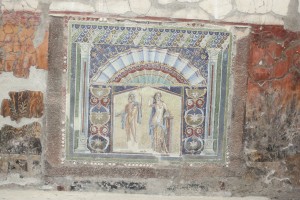As I've mentioned, this year marks the 800th anniversary of the sealing of the Magna Carta by King John at Runnymede. I previously posted the introduction and my translation of the original Latin of the 1215 version. Today, I continue with the King's guarantee of the freedom of the English Church, which was then in communion with Rome. The final separation of the English church from Rome under Queen Elizabeth I was more than 300 years in the future.
| In primis concessisse Deo et hac presenti carta nostra confirmasse, pro nobis et heredibus nostris in perpetuum quod Anglicana ecclesia libera sit, et habeat jura sua integra, et libertates suas illesas; et ita volumus observari; quod apparet ex eo quod libertatem electionum, que maxima et magis necessaria reputatur Ecclesie Anglicane, mera et spontanea voluntate, ante discordiam inter nos et barones nostros motam, concessimus et carta nostra [illa carta data 21ƒ novembris anno Domini 1214; confirmatio papae Innocentii tertii 30ƒ martii anno Domini 1215] confirmavimus, et eam obtinuimus a domino papa Innocentio tercio confirmari; quam et nos observabimus et ab heredibus nostris in perpetuum bona fide volumus observari. Concessimus eciam omnibus liberis hominibus regni nostri, pro nobis et heredibus nostri in perpetuum, omnes libertates subscriptas, habendas et tenendas eis et heredibus suis, de nobis et heredibus nostris. | First, we have granted to God and by this our present charter, confirm for us and our heirs into perpetuity that the English Church may be free and shall have all of its rights whole and its liberties unharmed and I am wishing it to be so observed; which appears from this that the freedom of election, which is thought the greatest and most important to the English Church, we, having instituted by our complete and free will before the dissension amongst us and our barons, granted and confirmed by our charter [that charter dated 21st of November in 1214 in the year of our Lord; confirmed by Pope Innocent III on the 30th of March in the year of our Lord 1215] , and we acquired confirmation of this charter from our lord Pope Innocent III, which we will observe and desire to be observed by our heirs into perpetuity. We grant also to all free men of our realm for us and our heirs into perpetuity all freedoms written below, having and holding for them and their heirs from us and our heirs into perpetuity. |
New York Times Gets It Wrong
Earlier this week, the New York Times published an article about new technology that promises to allow scholars to read the hundreds of carbonized scrolls found in the library of a villa engulfed by the eruption of Mount Vesuvius in 79 CE. The article incorrectly states:
Though Pompeii was engulfed by lava, a mix of superhot gases and ash swept over Herculaneum, preserving the documents in a grand villa that probably belonged to the family of Lucius Calpurnius Piso Caesoninus, the father-in-law of Julius Caesar.
In fact, Pompei was not engulfed by lava, but by ash and lapilli (pebbles). This light weight material made the excavation of Pompei relatively easy. In contrast, the smaller, but very wealthy, town of Herculaneum was covered in pyroclastic flows that eventually hardened into stone-like material. While Herculaneum was far more difficult to excavate, the process of its entombment preserved organic material including the scrolls in the nearby villa. Amazingly, it is possible to see the original wood beams of houses, furniture, and food remnants. Below is an amazing mosaic preserved on a wall in Herculaneum.



.png?width=100&height=100&name=corporate_law_blogs%20(1).png)